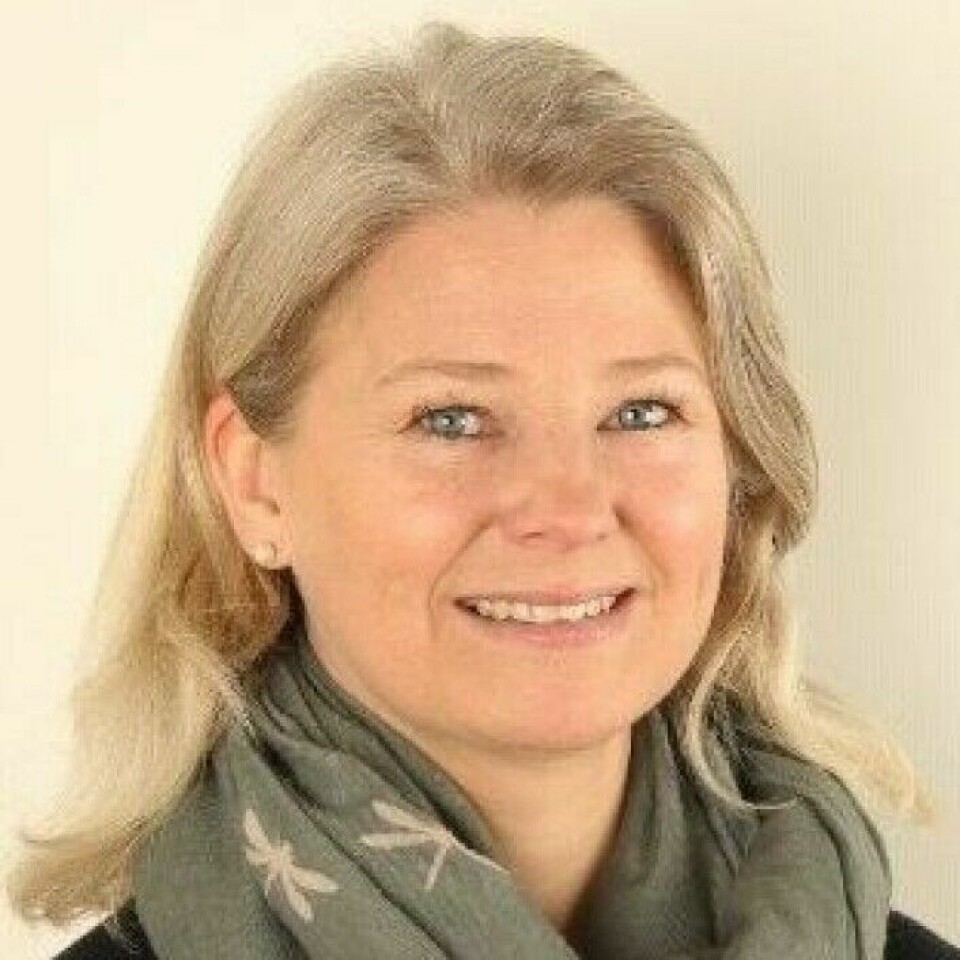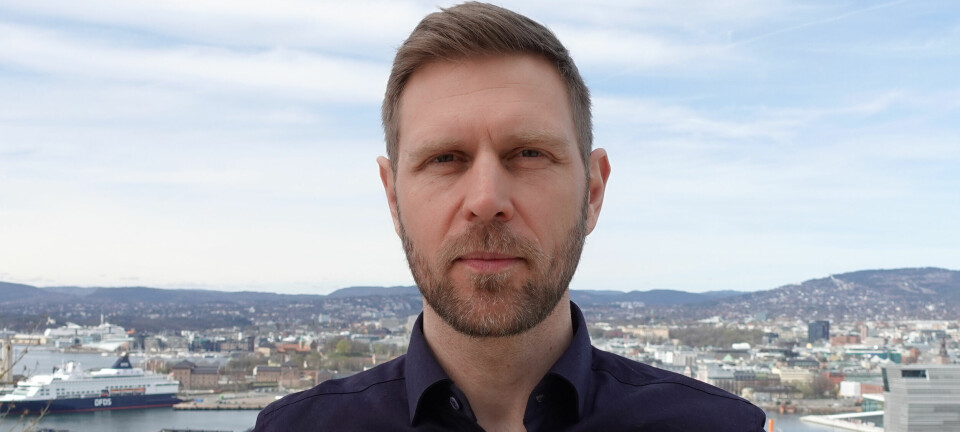
Studies involving 12,000 patients were not published:
No one checks whether researchers are doing their job
Researchers study everything from cancer to surgery. Participants show up for weeks on end. But the actual results from the study remain unpublished.
As many as 12,000 Norwegian patients have taken part in research where the results have not been made public, according to a new report.
“This is wasted research,” says Jan-Ole Hesselberg, program manager at Foundation Dam, which is behind the report.
Frede Frihagen is an associate professor at the University of Oslo. He is also an orthopaedic surgeon. He is one of those listed for unpublished studies.
Studied hip surgery patients
Frihagen’s study started in 2014. He and seven colleagues wanted to investigate whether hip operations went better if they inserted an extra plate to stabilise the hip. 31 patients participated. Some got the extra plate, others did not. The researchers then analysed the results.
They had collected enough data by 2018 and submitted a final report to clinical trials.gov. Researchers are obligated to do that. But the results were not published.
When sciencenorway.no contacts Frihagen, it turns out that an article has just been published. In January, more than five years after the study ended, a scientific article summarising the results came out: There was no difference for the patients whether they received an extra plate or not.
“We apologise that it has taken so long. The main reason for the time spent is that the analyses took longer than planned, the pandemic made collaboration and progress difficult, and that the publication process itself took time,” Frihagen tells sciencenorway.no.
He points out that they have communicated their results in other ways.
“The results were disseminated in the professional community before publication, at congresses and meetings,” Frihagen says.
No follow-up
Researchers cannot just start conducting research on patients. They must apply for approval and file reports. And most importantly: They must publish their results.
Norway is the worst of the Nordic countries when it comes to this. A third of all human health studies from 2016 to 2019 have not been published, even though they have been completed.

Researchers must have approval to start a study on humans. They have to apply to a regional committee for medical and health research ethics, REK for short.
"In the application, they must explain how they will publish the results," says Camilla Bø Iversen. She is director of the National Committee for Medical and Health Research Ethics (NEM). NEM is an advisory and coordinating body for the seven REK and is the body to which appeals from the REK are made.
When a study receives approval, project leaders are told that they must submit a final report.
“The final report should be sent no later than 6 months after the project has been completed, and there they can show where the results have been published. The purpose is to ensure control and transparency in research,” Iversen says.
REK is responsible for keeping a public record of research projects that have received approval and submitted final reports, under the regulations of Norway’s Health Research Act.
But REK has not followed up on whether these final reports are actually submitted.
In recent years, REK has improved its overview of the process. They have changed their data system, which now sends out notifications to the project leader and the institution responsible for the study.
Most viewed
But little happens if the researchers ignore the notice.
“Neither REK nor NEM have the ability to impose sanctions if a project leader for a study does not submit a final report,” Iversen says.
Furthermore, the responsibility for completing the studies also lies with the institutions, she points out.
277 patients with skin cancer
A total of 23 studies from the Norwegian University of Science and Technology (NTNU) are found on the list of unpublished studies. One of them is a skin cancer study that ended in 2017. This concerned trying out a simpler treatment. A total of 277 patients participated.
When sciencenorway.no makes contact with the researcher who is listed as the contact person, he is surprised. He has never heard of this study.
We found another name on the project description and got a response:
“It is correct that the monitoring of patients was completed in 2017. After this, examinations were carried out on the biopsy material that was part of the study. The pandemic delayed the project,” Eidi Christensen writes in an email to sciencenorway.no. She is an associate professor at the NTNU's Department of Clinical and Molecular Medicine.
Christensen says that the article on the study is now under review in a medical journal, and she assumes that it will be accepted for publication shortly.
The study on skin cancer started in 2012 and lasted until 2017. That means it could be published this year, seven years after the study was completed.
Some types of medical studies should not be able to delay publishing the results for so long.
Deadline of 12 months for medicines and equipment
If the study concerns medicines or medical devices, the researchers are required to publish the results within 12 months either in a scientific journal or in a database of medical studies.
The Norwegian Medical Products Agency (DMP) receives applications and gives final approval for research on medicines and equipment in Norway.

But they do not have numbers for how many of these studies have not published their results.
“Those who are responsible for the studies, for example the pharmaceutical companies, hospitals, and universities, are responsible for publishing the results of studies,” says Ingvil Sæterdal, head of unit at the DMP.
A regulation has recently been introduced in the EU, which also applies to Norway. Now, final reports from research on medicines must be entered into a common European database, called CTIS.
“It became mandatory to use this database in February last year. Here, information about the studies is automatically published over time,” says Sæterdal.
She points out that the requirement for publication applies regardless of the study’s results.
If the research concerns medical equipment, the results must be published in another database, EUDAMED. The development of this is delayed, according to the DMP.
These systems are new and under development, but Sæterdal hopes they will make it easier to follow up on studies. Moreover, the information will become more open and accessible to everyone.
Weeks of heart rate measurements
In 2017, NTNU researchers started a study on physical activity. More than 100 people participated. For 16 weeks, half of them wore a wristband that measured their heart rate. This gave the researchers information about how active they were. The other half followed the current recommendations for physical activity. Both groups were supposed to be followed up after one year.
The study was reportedly completed in 2018, but the results have never been published. NTNU researcher Bjarne Martens Nes explains:
“The intention has always been to write an article on this. The main explanation for why it has not been published is time and priorities, not a desire not to publish. Publishing is, after all, the most important thing we do as researchers,” Nes writes in an email to sciencenorway.no.
He points out that research projects are often limited in time and are temporary.
“As a result, the focus is often directed forward towards the next application and the next project, perhaps before the previous one has been completed in a sufficiently good manner. This has indeed happened to me with this study; other tasks keep ending up on my list. But this could have been avoided with better planning, for example, of who does what afterwards,” Nes writes.
However, the data has still been put to use, as a student thesis has been written from the study.
Nes completely agrees that publication is necessary.
"But I don't believe it's ill will or a desire to hide something that lies behind many of these cases, but of course, you can't know that," he writes.
Wants transparency
The Research Council of Norway finances much of the health research in this country.
“We facilitate and expect transparency around the research we fund, and we have guidelines for this. Responsibility for publishing the results lies with the institutions that carry out the research,” says Ole Johan Borge. He is the director of health and public sector at the Research Council of Norway.
In 2017, the Research Council joined the World Health Organization's declaration on the publication of results from clinical studies.
“Pre-registration of studies and prompt publication of results are important to ensure full transparency around medical and healthcare studies involving humans. It promotes ethical and moral perspectives and supports responsibility and integrity in –and the utility of – the research,” Borge says.
The guidelines are clear: pre-approval by REK, registration in international databases for clinical studies, updating the information, and the legally required publication within 12 months. The goal is transparency about the impacts and effects of the research the Research Council funds, according to Borge.
The Research Council has not responded to sciencenorway.no's question as to whether they check if the studies they finance are published. We also did not get an answer to whether they have numbers on how many studies are not published or whether researchers can receive new funding if they have not published results from their previous study.
Weakens research
“It is in the nature of research that the results must be published. Transparency is an important research ethical norm,” says Camilla Bø Iversen from NEM.
When doctors decide which treatment patients should receive, and when politicians make health decisions, they use research-based knowledge.
“That’s why the research must be published, so that important knowledge becomes known,” she says.
Published results are also a starting point for further research.
“That’s why rapid sharing of results is important,” says Jan-Ole Hesselberg from Foundation Dam.
“Imagine you are a researcher considering starting a study, but then you see that a similar study has already been conducted and reported to have ended with data collection completed. Then, of course, you don’t start the project. If we allow results to never be published or that they can be published 7-8 years later, we deprive other researchers of the opportunity to obtain this information."
———
Translated by Nancy Bazilchuk
Read the Norwegian version of this article on forskning.no







































